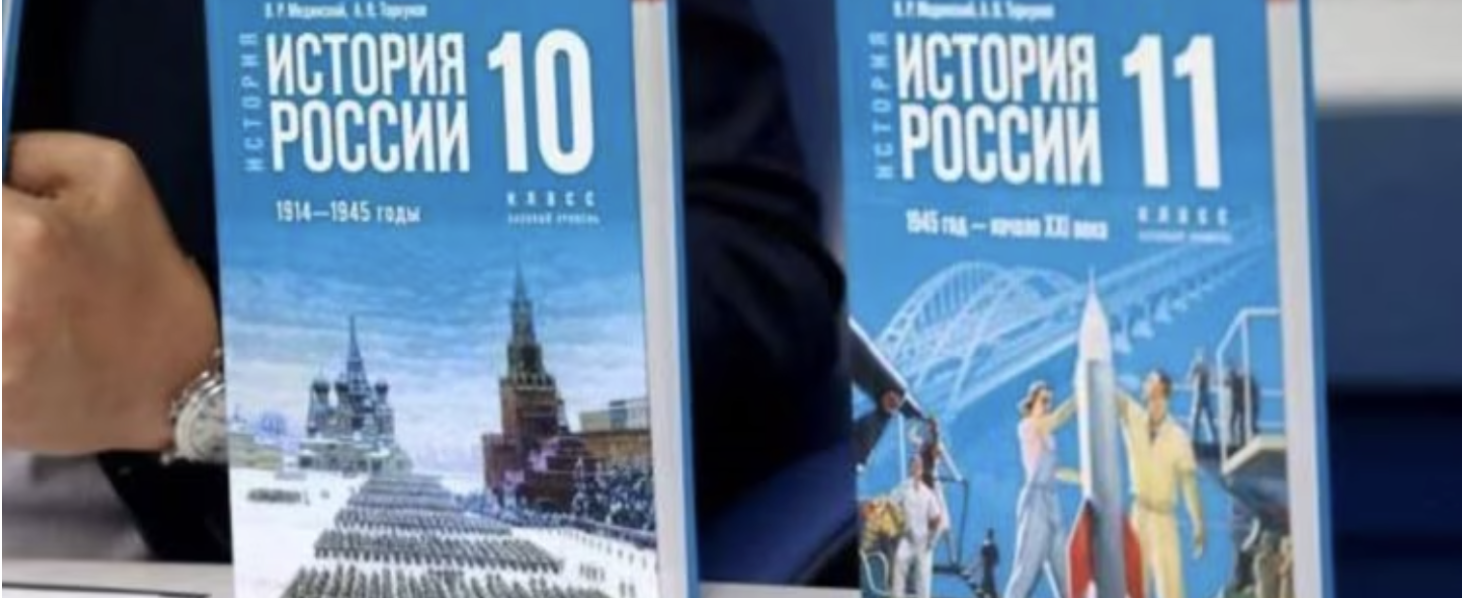The Russian Federation released new history schoolbooks with a section on the "Special Military Operation" and rewritten sections from the 1970s to the 2000s. The new textbooks also justify the deportation of all national minorities living in the USSR during the "Great Patriotic War" (World War II). Izzet Enünlü further explains how.
The academic year in the Russian Federation started with new rules and history textbooks. After the collapse of the Soviet Union, Russia adopted a relatively liberal system in which schools and even teachers could design the curriculum according to students' needs and choose alternative textbooks from an approved list. This year the system returned to the old centralized and unitary system. In the new books for the 10th and 11th grades, all chapters from the 1970s to the 2000s were rewritten; A section was included on the so-called “Special Operation” ongoing in Ukraine, and paragraphs were included that gave students information on how to identify foreign agents and protect themselves from their harmful effects.

However, the most offensive paragraph in the textbook, explains that Karachays, Kalmyks, Chechens, Ingush, Balkars, and Crimean Tatars cooperated with the occupation troops of Nazi Germany during the 'Great Patriotic War' and that all of these nations were subjected to forced migration by the Soviet Union. The evidence is given as based on factual data. On the other hand, the authors accept kindly that not only the guilty but also many innocent people were harmed, but that injustice disappeared after 1953.
Many public figures reacted to the books because the content was unreliable and had a hostile tone. Later, news came that textbooks were removed from circulation in Chechnya, and then it was announced that the authors would revise the section on deportation.
Deportations are truly one of the most tragic events of the Soviet Union. The highest death toll was the deportation of Crimean Tatars Chechens and Ingush. About a month after the withdrawal of the German army from the Crimean peninsula, on May 18, 1944, approximately 200,000 Crimean Tatars were deported to the last person within three days. About 8,000 Tatars died on the way due to dehydration and typhus. It is estimated that 20% to 46% of those deported died from hunger, exhaustion, and disease within the first three years. Almost half of those who died in the first year were children under 16. The Crimean deportation resulted in the abandonment of 80,000 households and 360,000 acres of land.
Previously, during “Operation Lentils” on February 23, approximately half a million Chechens and Ingush were deported at the same pace. The slightest resistance was punished with a massacre; For example, in one village, approximately 700 people were locked in a barn and burned to death. Those who resisted, protested, or walked too slowly were shot on the spot. It is impossible to know the exact figures, but it is estimated that 30% to 50% of those deported succumbed to hunger, disease, and climate either during the journey or in the early years of exile.
How the injustices were corrected after 1953 should be explained in the textbooks. Exiled nations know that, by 1957 their right of free movement was granted, but Crimean Tatars could only return to their homeland by 1989. Even then, the exiles were able to return using only their own resources, without receiving any compensation from the USSR or the Russian Federation.
To set up a fair tone to the collaboration accusation, first, it should be emphasized that non-Russian people indiscriminately whether they were collaborant or not were deported by train in cattle cars to the far corners of Siberia, Kazakhstan, and Central Asia and exploited economically. Secondly, it is important to realize that for the deportees, the occupants were first Russians and then Germans. Nazi Germany was the enemy of the enemy which proved to be not a friend. It is also important to acknowledge that many of the deported nations by no means could be collaborators because their regions were not occupied in the first place.
The accusation of collaboration is a complex problem, and explaining the events and reasons in a few sentences is not teaching history, but simply making propaganda by simplifying the events. It is ignored that deportations may have purposes such as punishing nations and breaking the will of the groups that are most resistant to assimilation attempts. Moreover, by not examining the geopolitical realities of the period, it is ignored that the USSR may have used the deportations as an excuse to clear the border regions of ethnic groups with historical ties to Turkey in order to prepare for a conflict over the Turkish Straits.
Since the Russian Federation cannot use either ethnicity or religion to create a nation, it strives to produce a history far from reality in order to create an ideology that will be the basis of a nation. To this end, these new books aim to create national unity by simplifying the facts and portraying Russia as surrounded by a hostile world, ignoring some facts and emphasizing others. Russia tries the victims to accept their supposed “responsibility” for the tragedy and make them accept the newly forged national identity. Their ultimate intention may also be to make the nations on the list ashamed of their own identities.